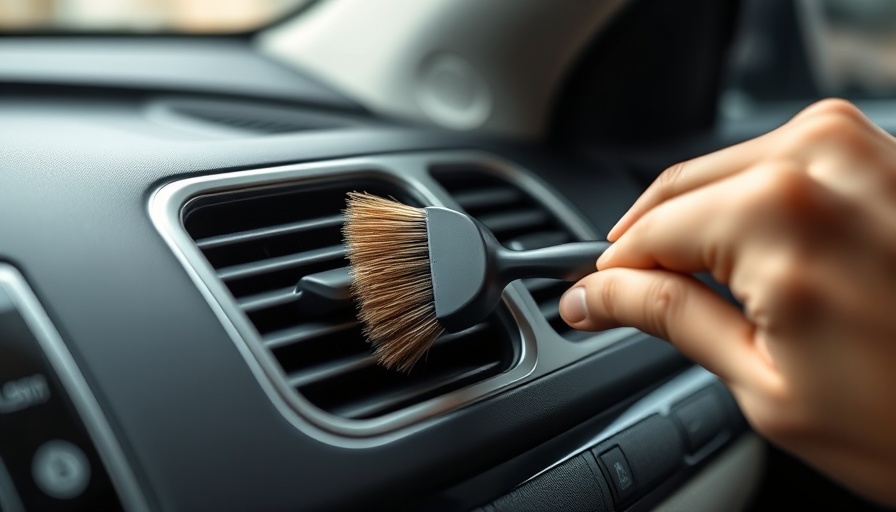
Maximize Your Vehicle's Lifespan with Simple Maintenance Tips
For every car owner, understanding the basics of vehicle maintenance is crucial not just for saving money but also for ensuring safety and longevity. With these ten handy car maintenance tips, anyone can easily keep their vehicle in top shape and avoid costly repairs down the line.
1. Clean Up Oil Spills Efficiently
Accidents can happen when working on vehicles, especially with oil spills. A free and eco-friendly solution is to use sawdust. Simply sprinkle sawdust over any oil spills, allow it 20 minutes to absorb the liquid, and then sweep it away. This method is easy, effective, and utilizes materials you likely already have at home.
2. Keep Your Car Air Vents Dust-Free
Dust accumulation can interfere with your vehicle's air circulation. An inexpensive artist's paintbrush coupled with furniture polish can do wonders here. Use the brush to reach into the crevices of the air vents, collect the dust, and dispose of it, restoring your car's cleanliness and air quality.
3. The Extension Handle Trick for Truck Beds
Trucks are great for hauling but unloading can be a hassle. To ease this, place a simple extension handle with a paint roller attachment in your truck bed. This allows you to haul out items without the need to climb into the truck, protecting your back and time.
4. Prevent Losing Items Between Seats
We've all been there—keys or phones slipping between seats can be frustrating. To combat this, wedge foam pipe insulation into the gaps. This simple solution prevents items from playing hide and seek, ultimately increasing safety while driving.
5. Transform Cardboard into Drop Cloths
Instead of tossing out those large cardboard panels, repurpose them into disposable drop cloths for oil changes or messy projects. This is an excellent way to recycle and reduces waste, helping you stay organized during your vehicle maintenance.
6. Maintain Your Window Tracks
Winter drivers know the struggle of frozen windows. Avoid costly repairs by lubricating window tracks with spray silicone or dry Teflon lubricant. Regularly applying this helps maintain smooth operation and prevents potential damage.
7. Adopt Eco-Friendly Cleaning Methods
In line with the recent momentum toward sustainability, consider using waterless or reduced-water cleaning methods. Waterless cleaning products not only save water but are also gentler on car surfaces compared to traditional washing. When caring for your vehicle, look for biodegradable cleaning products packaged in recyclable materials.
8. Drive Responsibly to Reduce Wear
Driving habits significantly impact your vehicle’s longevity. Smooth driving, avoiding sudden accelerations and decelerations, can improve fuel efficiency and reduce wear and tear. This practice not only saves money on fuel but minimizes the car's overall environmental impact.
9. Schedule Routine Maintenance
Regular check-ups can help catch problems early before they escalate. Keeping your vehicle on a maintenance schedule ensures it runs efficiently, ultimately saving on emissions and operation costs.
10. Dispose of Waste Responsibly
Lastly, always ensure that any car parts or fluids are disposed of responsibly. Many components can be recycled, reducing landfill waste and conserving resources. Choosing sustainable services when needing professional help guarantees your maintenance aligns with eco-friendly practices.
Conclusion: Empowering Car Owners
Embracing these handy car maintenance tips empowers every vehicle owner. Beyond saving time and money, implementing these practices leads to a healthier planet—showing that car maintenance can be both effective and environmentally conscious. With just a few tweaks to your routine, you'll not only promote your car's longevity but also take a step toward a sustainable future.



Write A Comment